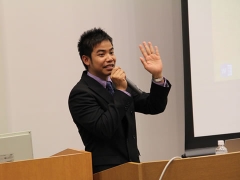Finding value in acid mine drainage, mine tailings and waste rocks
Dr Carlito Tabelin hopes novel techniques will reduce the negative environmental impacts of mine wastes, including acid mine drainage, tailings and waste rocks, and attach value to these problematic waste streams.


